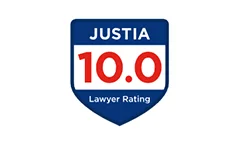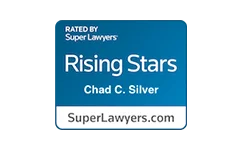What An Offer In Compromise Means (And How To Handle It)

There are two kinds of people in this world: those who look forward to the return they’ll get every tax season and those who dread that day in April like the plague.
If you owe money on your taxes, it’s natural to feel overwhelmed. Not only are the forms and jargon complicated enough to maneuver, but now you’re faced with a sky-high bill on top of everything else.
For some, the next step may be to write a check, put it in the mail and move on. For others, it isn’t so easy.
The good news? An IRS Offer in Compromise can provide the financial relief you need. If you’re unable to pay your taxes in full, this program can help you discover ways to lower the amount you owe.
Today, we’re delving into this approach and how to go about pursuing it. Ready to learn more? Let’s get started.
What is an IRS Offer in Compromise?
Let’s begin with a basic definition.
An Offer in Compromise (OIC) is an agreement between a taxpayer and the Internal Revenue Service (IRS) that allows the taxpayer to settle his liabilities for less money than he owes. When submitting an OIC application, the taxpayer will offer an amount that he feels comfortable paying, then await a response.
This program supports those who cannot pay their full amount, even with a flexible payment plan in place. Those who can swallow the bill but can’t do so in one lump sum will often qualify for an installment agreement but aren’t eligible for an OIC.
If an installment plan sounds more like what you’re after, you can learn more about it under IRS Topic Number 202: Tax Payment Options.
How Do I Qualify?
Wondering whether or not you should pick up an Offer in Compromise form? Check to make sure that you’ve completed and filed every one of your other required tax forms, first.
Taxpayers should have completed all of their estimated tax payments for the current year if required. Business owners who have employees should have completed all required federal tax deposits for the most recent quarter, as well.
The key to qualifying lies in the value of your existing assets.
To determine your eligibility, the IRS will conduct an assessment that measures your Reasonable Collection Potential (RCP). This is the value of all of your physical assets, including your:
- Vehicles
- Real Property
- Bank Accounts
- Any Other Property
In addition to your assets, the RCP will also measure the amount of your projected future income based on your current earnings. This number, minus your estimated basic living expenses, is also a factor.
If you apply for an OIC and the amount of money you offer to pay is less than your RCP, it’s unlikely that the IRS will accept your offer. However, if your offer meets or exceeds your RCP, your odds of acceptance are higher although not guaranteed.
Reasons for Acceptance
Even those in dire financial situations receive an OIC offer denial. To increase your likelihood of approval, it’s helpful to know a few of the IRS’ deciding factors. Let’s go over a few of the most important ones.
Tax Liability Doubt
Do you have concrete evidence that supports your rebuttal of the tax liability you owe? If you think your numbers are incorrect, this doubt can be reason enough for an OIC acceptance.
However, resist the urge to complain about your number and question it under false pretenses in an effort to get by with paying less. The IRS will only go this route if there is an actual, genuine dispute over the amount of the tax debt.
Effective Tax Administration
In some cases, a taxpayer doesn’t dispute the amount of tax that he owes. He understands the liability and may even have the money in hand to pay it, but resists doing so for one of two reasons:
- It would cause economic hardship.
- It would be unfair and inequitable based on certain tax laws.
Economic Hardship
Let’s begin with the first. An economic hardship consideration covers taxpayers who can pay their debt in full but if they do so, they’ll be in a difficult financial situation moving forward.
This is an especially common case for disabled taxpayers. They may live on a fixed income where every dollar counts. Even if the IRS creates an installment plan for their tax liability, they’ll lose basic living expenses if they shelled out that money every month.
What about that person’s house? Is that considered an asset under RCP? The short answer is “not always.”
Even if he owns a home modified to fit his condition, the taxpayer cannot leverage that ownership to pay his taxes. Due to his disability and limited earning potential, the homeowner may not be able to obtain a mortgage or borrow against that equity. In addition, if the IRS forces a sale of his house, the taxpayer will experience adverse conditions, as the home met his exact lifestyle needs.
Unfair and Inequitable Tax Laws
It’s in the IRS’ best interest that public confidence in tax laws remains high. Americans should be confident that the legislation is fair and honest.
To this end, if collecting a taxpayer’s liability in full could undermine that confidence, there may be grounds for an OIC.
When would this come into play?
Say a business owner and taxpayer partners with a payroll services provider (PSP) to handle all of the company’s payroll activities for the year. Before hiring the PSP, the business leader spent time ensuring it was a reputable and experienced firm, contacting references who had also used the same PSP with excellent results.
Throughout the year, the taxpayer made sure the PSP paid all the requisite federal tax deposits on time, monitoring the company’s bank accounts for the withdrawal or checking the Electronic Federal Tax Payment System (EFTPS).
Along the way, the taxpayer notices that the PSP misses a deposit, and takes immediate action from there forward, verifying all payments on their due date.
In this case, the PSP contributed to the delinquency. As such, it’s fair for the IRS to allow the taxpayer to pay less than the stated amount owed.
Tax Collectibility Doubt
A third reason that the IRS may accept an OIC is if there is reasonable doubt that the amount of money owed is fully collectible.
This doubt enters when a taxpayer’s combined assets and income are less than the full amount of the tax liability.
Which Forms to Pick Up
Once you’ve determined you’re eligible for an OIC, there should be one form to complete, right? Not quite!
The specific form you use will depend on which of the above three reasons you’re claiming for your inability to pay.
If you’re claiming that you have tax collectibility doubt or that the payment interferes with effective tax administration, reach for the most current version of Form 656, Offer in Compromise. In addition, pick up Form 433-A (OIC): Collection Information Statement for Wage Earners and Self-Employed Individuals.
If you’re a business owner claiming either of those two reasons, you’ll need Form 433-B (OIC):Collection Information Statement for Businesses.
If you’re submitting an OIC based on tax liability doubt, you need Form 656-L: Offer in Compromise (Doubt as to Liability). Note that this form will replace Form 656 and Form 433-A (OIC) and/or Form 433-B (OIC).
Paying the Application Fee
Of course, there is an application fee included in most of the forms you use.
Form 656 will detail the fee to pay. Don’t combine this with your tax payments. Rather, pay it as a separate charge. In some cases, you are exempt from paying this fee, based on one of the two reasons:
- You’re filing an OIC based on tax liability doubt.
- You’re an individual who qualifies for the IRS’ low-income exception.
You can’t qualify for the low-income exception if you’re a taxpayer who represents a corporation, partnership or another enterprise. To qualify as an individual, your full monthly income must fall at or below 250% of the nation’s poverty guidelines, set by the U.S. Department of Health and Human Services every year and published here.
If there is any question at all about whether or not you qualify for this exception, consult Section 1 of Form 656. If you qualify, you’ll complete this section and check the box for certification.
Paying Your OIC Amount
Part of your OIC application is determining how you want to pay the new tax liability amount, should the IRS accept it.
To make it as easy as possible on you, the IRS gives you two payment options. Let’s take a look at each.
Lump Sum Payment
The IRS defines this as a “Lump Sum Cash Offer.” If you choose this option, you’ll pay the entire amount of your lowered tax liability in full over five or fewer installments. You’re required to pay it in five or fewer months from the OIC acceptance.
Is the route you want to take? If so, when you complete Form 656, you’ll also need to include a payment of 20% of the full amount, which is nonrefundable. This is a secondary payment that is separate from the application fee.
Note that you won’t receive this 20% deposit back, even if the IRS rejects your OIC or returns it without acceptance. It will, however, get applied to your overall tax liability, and you’ll have a say over which specific liability it helps pay down.
Periodic Payment
As an alternative, you may choose to pay your new tax liability over a longer course of time.
You’ll pay a “Periodic Payment Offer” over six or more months, with the final payment issued within 24 months of the OIC acceptance.
If you choose this option, you’ll include the amount of one proposed month’s payment when you submit Form 656. This is a separate payment in addition to the application fee.
As with the Lump Sum Payment deposit, this first payment isn’t refundable in most cases. Another catch? While the IRS is reviewing your OIC, you’ll need to start making monthly payments that align with your proposed offer.
These amounts are also nonrefundable, although you can apply them to your tax liabilities and select which ones they apply to.
If You Receive an Approval
Did the IRS approve your OIC application? Congratulations! Now, it’s up to you to comply with the government’s expectations.
The IRS expects that you will have no further delinquencies and that you will follow all requisite tax laws. If you stray from any of the terms and conditions outlined by the OIC, it can enter into a state of default.
In this case, the OIC is no longer active and the taxpayer must pay all the original amounts owed, minus any payments already made, along with interest and penalty fees.
The bottom line? Abide by the rules and stick to the guidelines to ensure your offer remains in effect for the duration of your agreement.
If You Receive a Rejection
You completed your OIC, sent in the required fees and payments, and received a rejection letter back from the IRS in the mail. What now?
First, understand that you have the right to appeal.
Take a look at the letter and read the reasons why the rejection occurred. The letter will direct you in how to contact the IRS Office of Appeals to re-open your case. You’ll have 30 days to make your appeal from the date of your letter.
During the time that your OIC application is pending, as well as for 30 days after a rejection and during your appeal consideration time, the IRS will suspend its normal collection activities.
If You Receive a Returned Offer
Surprised to receive your offer back in the mail? It might not be a rejection.
Sometimes, the IRS will send your OIC application back because it’s incomplete. You may have forgotten to include a required payment, missed a form or skipped a text box.
Other reasons that the IRS will send your OIC back include:
- If you file for bankruptcy during the review time
- If you haven’t filed your tax returns yet
- If you haven’t paid your current tax liabilities by the review time
While you can’t appeal a returned offer, you can correct the missteps and submit it again when you’re ready.
Navigating an IRS Offer in Compromise
After reviewing these details, are you considering an IRS Offer in Compromise?
While it isn’t for everyone, it may be the exact step you need to take to reclaim your financial freedom and preserve your assets moving forward. This is especially the case if you think your inability to pay your liability falls into the three main categories discussed herein.
As eager as you are to get started, don’t go at this alone. Taxes are complicated, tricky and full of snags.
That’s where we come in.
We’re a team of experienced tax attorneys who can help you navigate this next step. Contact us today and let’s fight for your rights together.





Free Consultation 24/7
Chad Silver
Attorney

Silver Tax Group Locations


777 South Flagler Drive
Suite 800 – West Tower
West Palm Beach FL 33401

4005 Guadalupe St
Suite C
Austin, TX 78751


